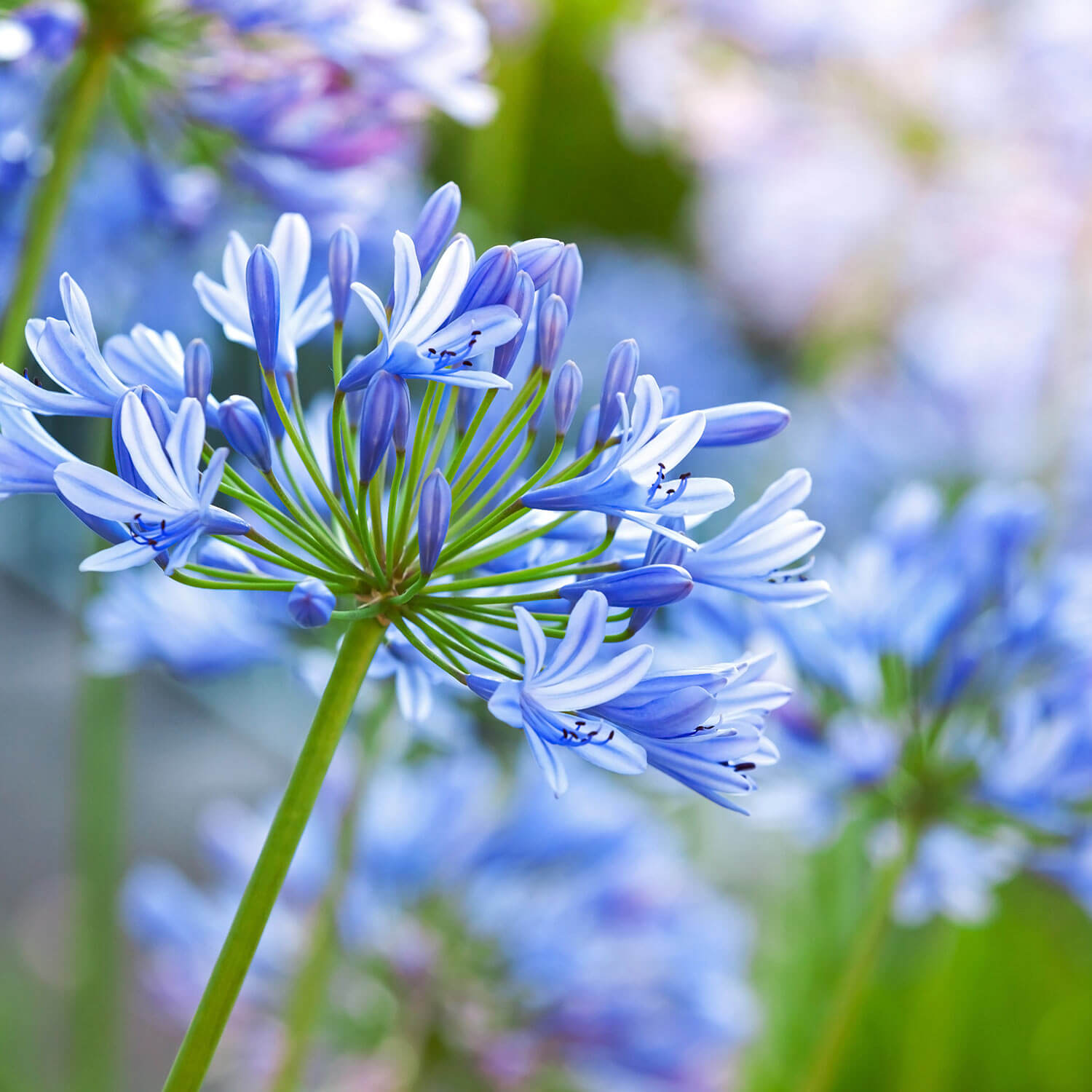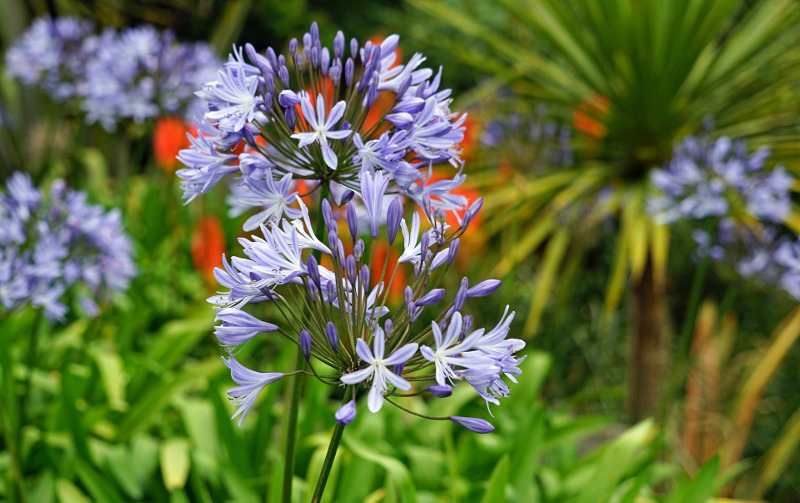How to Plant and Maintain Agapanthus in Your Garden
Wiki Article
Unleashing the Secret to Successful Agapanthus Growing: Tips and Techniques for a Flourishing Yard
In the world of horticulture, growing agapanthus effectively requires a strategic technique that encompasses different elements of plant treatment. With mindful attention to detail, one can unlock the keys to nurturing these sensational flowers, leading to a garden that grows with charm and vibrancy. By comprehending the subtleties of agapanthus farming, one can develop an environment where these plants prosper and grow perfectly. In the following discussion, we will explore essential suggestions and tricks that will guide you towards a growing agapanthus yard, using understandings into finest practices, dirt problems, sprinkling strategies, and much more.Growing Agapanthus: Best Practices
When growing Agapanthus, proper soil prep work is necessary for making certain successful development and advancement of these stunning blossoms. Agapanthus, typically known as Lily of the Nile or African lily, prospers in well-draining dirt with a somewhat acidic to neutral pH degree - Agapanthus. Before planting, it is crucial to amend hefty clay soils with raw material such as garden compost or peat moss to improve drain and give vital nutrients for the plantsTo plant Agapanthus, choose a place that receives complete sunlight to partial color, as this will certainly advertise healthy growth and plentiful blooming. Dig a hole twice the size of the plant's origin sphere and place the Agapanthus at the same depth it was previously expanding. Gently backfill the hole with dirt, pushing down strongly to remove any type of air pockets around the roots.
Water the freshly grown Agapanthus completely and remain to maintain the soil evenly damp, specifically throughout the plant's active expanding period. Agapanthus. Using a well balanced fertilizer once a month can additionally sustain the plant's growth and blooming. By complying with these best methods for planting Agapanthus, you can produce a stunning display of these exciting blossoms in your yard
Ideal Soil Conditions for Agapanthus
For ideal development and growing success of Agapanthus plants, making sure the dirt conditions are excellent is important. Agapanthus flourishes in well-draining dirt with a slightly acidic to neutral pH level ranging from 6.0 to 7.0. This type of dirt permits appropriate water drain, stopping waterlogging which can cause root rot. To boost soil drainage, take into consideration adding raw material such as compost or peat moss when preparing the planting website. Moreover, Agapanthus prefers soil that is abundant in nutrients, so integrating a well balanced plant food throughout the expanding period can promote healthy development and vivid blossoms.
Watering and Feeding Tips
To ensure healthy and balanced growth and lively flowers, correct watering and feeding techniques are crucial for successful Agapanthus farming. Agapanthus plants profit from routine watering, particularly during the growing period.When it concerns feeding Agapanthus, a balanced fertilizer with equivalent parts nitrogen, phosphorus, and potassium can be applied in the springtime to promote healthy growth and flowering. Slow-release fertilizers are ideal for supplying nutrients gradually over a prolonged period. Prevent over-fertilizing, as this can bring about too much foliage development at the expense of flowers.
In addition, integrating raw material like garden compost into the soil can improve nutrient degrees and improve dirt structure, helping in the total health and wellness of the Agapanthus plants. By complying with these watering and fertilizing ideas, garden enthusiasts can guarantee their Agapanthus plants grow and create stunning screens of flowers.
Trimming and Deadheading Methods
Correct pruning and deadheading techniques play an essential duty in preserving the wellness and aesthetic appeals of Agapanthus plants, enhancing the important practices of watering and feeding for successful farming. Pruning Agapanthus includes getting rid of invested blossom heads, yellowing or dead fallen leaves, and overall shaping of the plant to advertise far better development. Deadheading, the procedure of removing faded flowers, not only improves the plant's look yet additionally motivates additional flowering.When deadheading Agapanthus, it is advisable to snip off the blossom stem at the base making use of sharp, clean shears. This process redirects the plant's power from seed manufacturing back right into origin and foliage growth, advertising a much healthier and more robust plant. Routine deadheading can prolong the blooming period of Agapanthus and prevent self-seeding, which can result in overcrowding.
In terms of pruning, Agapanthus typically take advantage of a light trim after blossoming to tidy up the plant visit here and motivate fresh growth. Cutting back the invested flower stems and removing any dead or damaged foliage helps maintain the plant's vitality and overall appearance. However, it is important to avoid cutting into the crown of the plant, as view it now this can compromise its health and wellness.

Protecting Agapanthus From Vermins and Diseases
Implementing effective pest and condition management methods is crucial to guarding the wellness and vigor of Agapanthus plants in growing. Agapanthus are normally hardy plants, yet they can still succumb to different insects and conditions if not properly looked after. One common bug that affects Agapanthus is the Agapanthus borer, a caterpillar that passages into the plant, creating damages to the leaves and blossoms. To avoid invasions, routine evaluation of the plants is crucial. If borers are discovered, they can be manually gotten rid of, or insecticidal soap can be used as a control procedure.In enhancement to bugs, Agapanthus are at risk to conditions such as origin rot and fungal fallen leave areas. By staying attentive and attending learn the facts here now to pest and disease issues promptly, garden enthusiasts can aid their Agapanthus grow and grow.

Conclusion
Finally, effective farming of agapanthus needs appropriate growing techniques, excellent soil problems, adequate watering and fertilizing, routine trimming and deadheading, and defense from pests and illness. By adhering to these tricks and suggestions, garden enthusiasts can make certain a prospering garden full of stunning agapanthus blossoms. Agapanthus. Bear in mind to maintain constant treatment and interest to detail to promote the health and durability of these magnificent plantsWhen growing Agapanthus, correct dirt prep work is important for making sure effective growth and development of these gorgeous flowers.Water the freshly planted Agapanthus completely and continue to keep the soil evenly moist, particularly during the plant's active growing season.For optimal development and growing success of Agapanthus plants, ensuring the dirt problems are excellent is critical. When transplanting or growing Agapanthus, ensure the dirt is well-prepared to provide the required structure for the plants to establish themselves effectively. One common bug that impacts Agapanthus is the Agapanthus borer, a caterpillar that tunnels right into the plant, triggering damages to the fallen leaves and blossoms.
Report this wiki page